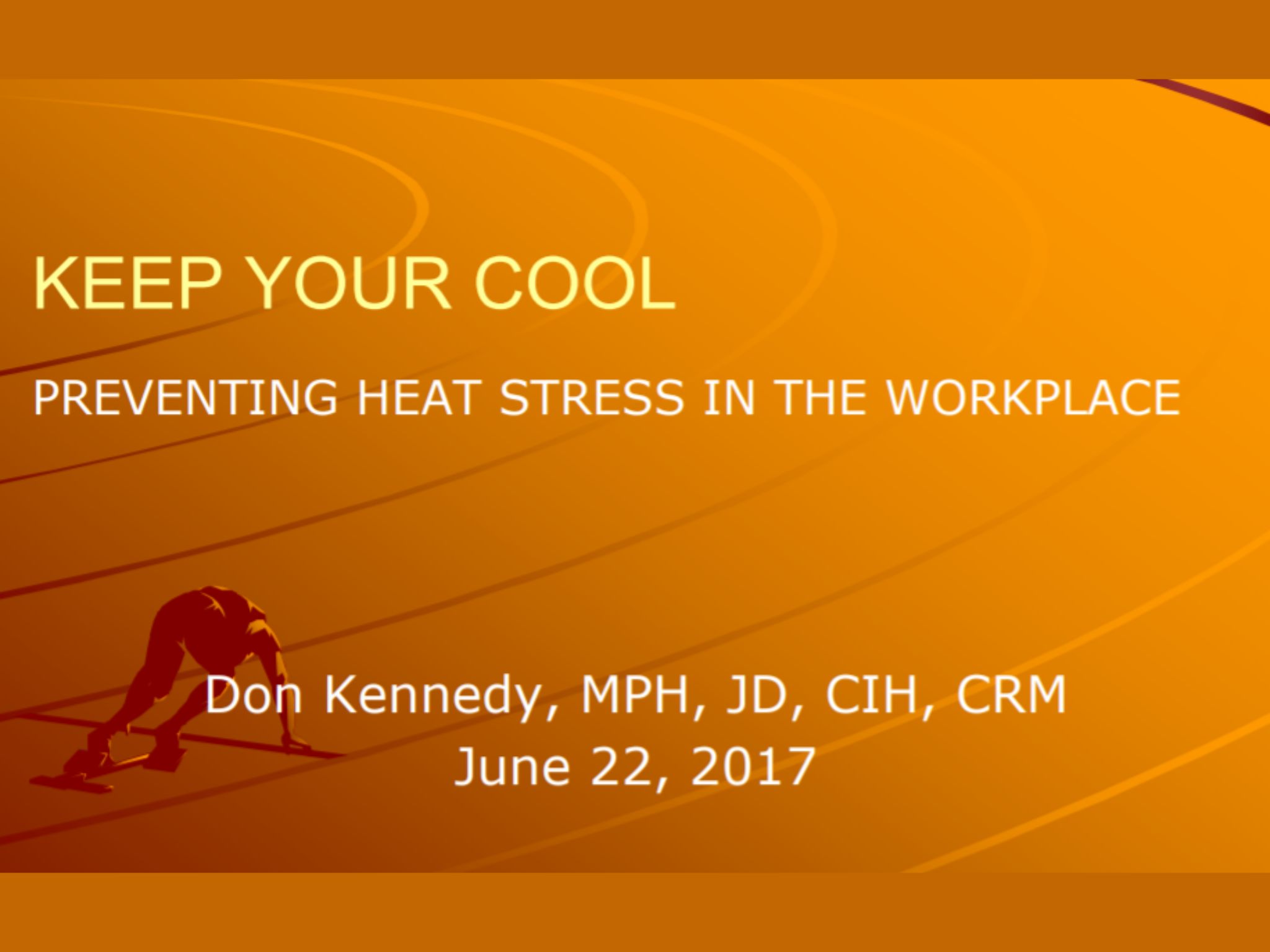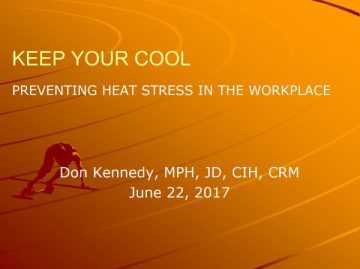Presentation Outline:
- Body’s Response to Heat
- Risk Factors
- Signs, Symptoms, Prevention, and Treatment
- Body Heat Balance Equation
- Measuring Heat Stress
- Heat-Related OSHA Standards
- Recommended Heat Stress Exposure Limits
- Heat Stress Prevention Program Elements
- Case Studies – Occupational Safety and Health Review Commission
- Review
Body’s Response to Heat
Coping with Heat
- How does the body cope with heat?
- The body tries to maintain a constant internal temperature of 98.6°F
- When the internal temperature rises, the body attempts to get rid of excess heat by:
- Increasing blood flow to skin surface
- Releasing sweat onto skin surface
Effects of Body’s Response
- Reduced blood flow to brain
- Reduced mental alertness and comprehension
- Reduced blood flow to active muscles
- Fatigue, loss of strength
- Increased sweating
- Slipperiness
When Cooling Mechanisms Fail
- High air temperature reduces effectiveness of the cooling system
- High humidity reduces evaporation rate of sweat
- Excess loss of sodium
- Dehydration
Risk Factors
Environmental Factors
- Temperature
- Relative humidity
- Radiant heat
- Air velocity
Individual Factors
- Individual variability
- Acclimatization
- Age
- Overweight / body fat
- Drugs
- Caffeine
- History of heat-related illness
Work-related Factors
- Workload
- Type of work
- Level of physical activity
- Time spent working
- Clothing
- Weight (heavy vs. breathable)
- Color (dark vs. light)
- PPE and protective gear / clothing
Work-related Clothing and PPE
- Protective gear – police and emergency responders
- PPE and clothing adjustment factors
- Level A suit without microclimate cooling: 50°F
Guide for the Selection of Personal Protective Equipment for Emergency First Responders, 2nd Edition, DHS Security Guide 102-06 January 2007

